Radu Jude and Christian Ferencz-Flatz on Eight Postcards from Utopia
Vol. 153 (March 2025) by Isabel Jacobs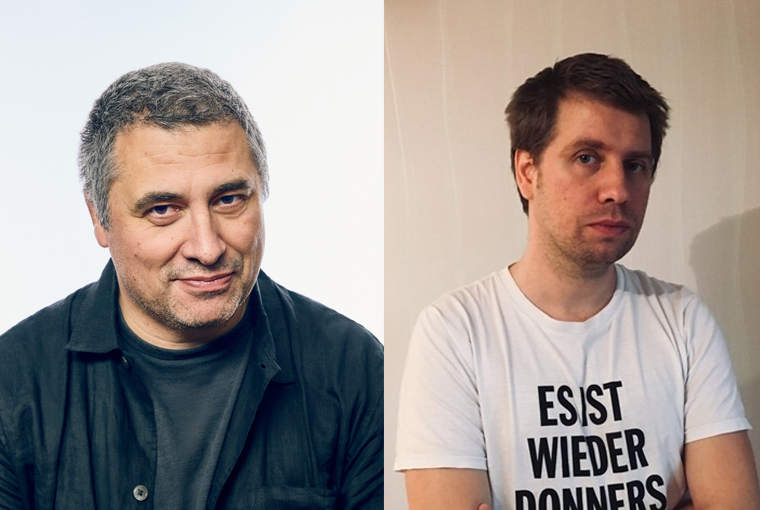
We met Radu Jude and Christian Ferencz-Flatz to discuss their collaborative collage film “Eight Postcards from Utopia,” a montage of advertisements from Romania after and since the Romanian Revolution of 1989. Jude and Ferencz-Flatz discuss the idea behind the project, 1990s Romania, and what advertisements reveal about history.
What was the idea behind Eight Postcards from Utopia, and how did you come to collaborate on the film?
Jude (RJ): I initiated this collaboration; it began with a desire to make a film centered around these images, or at least around this theme. I had also worked in advertising myself. Like many filmmakers, I needed to earn a living outside of cinema, as it was – and still is – very difficult to survive solely through filmmaking.
I worked in television, served as an assistant, and for a rather long period – longer than I would have liked – directed commercials, among other things. So I was familiar with the field, so to speak. I had this desire to do something connected to it, but no clear idea of what shape it might take.
That’s when I contacted Christian. We didn’t know each other very well at the time, although I was aware of him because he wrote about cinema and had introduced some of us to authors I either didn’t know or knew only superficially – writers like Walter Benjamin and Theodor W. Adorno. He had translated and advocated for them, which was a very important discovery for me. And I’ll let him continue from here.
Ferencz-Flatz (CF): Yes, we had exchanged a few conversations before, but I think Radu either called or wrote an email with this invitation. It was quite unusual for me, as I hadn’t been involved in film projects before. But I was very curious, so I accepted immediately.
Radu mentioned Benjamin’s philosophy. Before we dive into the filmmaking process, could you, Christian, maybe give us some impressions on how this film relates to your work as a philosopher?
CF: I wouldn’t say there was a master plan to connect everything, but over time I found myself engaged in many different projects and tried to make sense of them and link them together. While working on this film, I noticed several connections, and I discussed them with Radu – particularly relating to Benjamin’s work on refuse. In a way, this project was like going through ‘trash.’
These materials weren’t preserved in any formal way. We found them in various states and situations: some were circulating online, some were salvaged by a scavenger in Bucharest who collects all kinds of materials from flea markets. He buys things like old video cassettes and film reels.
RJ: If I may interrupt – he’s the perfect example of what’s called archive fever!
CF: Exactly. We contacted this guy, who is a collector of all sorts of materials from the Communist and post-Communist period, which he then assembles to short films. He has since put many of these materials on his YouTube channel. We contacted him and also purchased some materials from him. So the project grew in many different directions and referred back to some of the philosophical work I had been doing earlier.
So there were quite different sources, including the internet, archives…
RJ: …and some material from post-production companies that are or were active some years ago. The producer, Saga Film, has been involved in advertising production since the early 2000s and has had connections with some post-production companies. They knew me a little, and some of the images came from copies they made for us. So it’s about half-and-half in terms of sourcing.
How much of this material actually ended up in the film? Where do the ‘eight postcards’ come from? And what was the editing process like?
CF: Very little, actually. We had around 100 hours of material. Not all of it was advertising – some were different versions of the same ad, some was behind-the-scenes footage from commercial shoots, and some documented promotional events. So, broadly speaking, it was all related to advertising, but there was much more material than we could use – maybe a ratio of 50:1.
We started with a script, since we had received funding from the Romanian Film Center based on an early version of the project. We reviewed the material multiple times, tagging clips according to the themes or directions we wanted to explore, and then shaped the final work from there.
Maybe you could say a little more about these eight themes or directions – the postcards – for readers who haven’t seen the film?
RJ: I’ll let Christian take this one. I had the intuition that the film should be fragmentary – made up of separate chapters, each with its own strategy – because the materials themselves lacked homogeneity. They came from different eras, served different purposes, and used different aesthetic or production methods. The style of storytelling varied as well, so the result was a very chaotic corpus of material. Christian was the one who brought structure to it.
CF: Initially, we just had some basic ideas about how to group the materials into categories. For example, we had a section on gestures in advertising, another on the use of language, one focused on representations of nature, and so on. We tagged the material according to these dominant themes, and then tried to shape each group into a sort of arc – a demonstration or narrative structure of some sort.
That’s essentially how the ‘postcards’ emerged. The titles were intended as a kind of guide – to orient the viewer toward a particular idea. Rather than watching a chaotic mashup of ads, just running before your eyes, the idea was to help people see the bigger structure we were trying to create within and between these fragments.
And how was the collaboration between you? It seems like you brought complementary perspectives to the project.
RJ: Yes, in a way the film mirrors our collaboration. If I remember correctly, at the beginning, we developed it more or less chapter by chapter, in the same order they appear in the final version. You’ll notice the first chapter is messier and longer than the others – I think that’s because we were just starting out. Christian had the desire to keep more material in, to be clearer or more explanatory perhaps.
Later, he became more interested in experimental approaches. And I think he quickly developed a strong sense for montage – for how to work with editing images and sounds. On my side, I also learned a lot from this collaboration.
Actually, as a side note, that’s part of why we couldn’t talk last week – I was dealing with so many technical problems on another film. It reminded me again that our so-called film industry is still, in many ways, held together by amateurs! Actually, nobody is a real professional. Sometimes, it’s the most annoying thing in the world – when you need someone for sound mixing or editing, you realize there are very few real ‘professionals’. Everyone’s ‘creative’ in a certain way, but sometimes you just need someone who really knows the trade!
But at the same time, maybe that’s also one of the strengths of Romanian cinema — this mix of professionalism and a certain kind of fertile amateurism. And I think what I learned most from Christian was his complete disregard for certain unwritten rules. Even though I try to consider myself open to everything, there are these unwritten rules that seep into your practice over time without you even realizing it.
And Christian just didn’t care about any of that – and that was the most liberating aspect of the film. I honestly think it is quite free in its form and practice, especially compared to what’s usually around. And that comes from his freedom, as someone who doesn’t care about convention. There were moments when I’d say, “This cut isn’t quite right,” and he’d respond, “I don’t care, what’s wrong with it?” And I’d realize, he’s right: Why should you change it?
CF: Just to note, there is indeed a difference between the first and last segments of the film, particularly in terms of the level of intervention and the degree of editing put into it. This is something we realized quite early on. I think there is a justification for this distinction. The first part of the project sets the historical framework for what follows – it’s the section that deals with history. I believe it’s justified to treat the materials as historical documents in that section, and less so in the later parts.
RJ: You know, there is this painter I admire, Jean Dubuffet, who has a couple of small books on art, specifically painting. One piece of advice he offers, which aligns with what Christian has said, is that when he makes a mistake, rather than altering the work to fit his pre-existing vision, he prefers to shift his perspective on the work itself, adapting his frame of looking in order to accommodate it.
Now, in the case of our film, it was, in a way, messy in the way it was created. And now Christian always claims that it actually mirrors this kind of approach or that one – exactly Dubuffet’s strategy! While this can of course be useful, I also think it’s risky because it can lead to the excuse of bad decisions: “This is exactly what I wanted to do!”
For example, if the film comes off as boring – well, you might hear someone say, “Yes, it’s boring because of this and that.” I see this a lot with students: it’s tiring when they tell you that something is intentionally boring or too long because it’s supposed to reflect that the character is bored.
I think there’s a kind of development the viewer can pick up on as well. Take the seventh chapter, for example – I think it’s called Anatomy of Consumption. There’s no sound, and you go quite deep into the material, focusing on the gestures…
CF: Yes, but if you look at it closely, I wouldn’t say it’s a gradual development, exactly. It’s true that there’s a contrast between what we did in the first chapter and what we did in the epilogue. In the epilogue, we used small fragments from everywhere and added a kind of superficial sound design – so it’s definitely the most heavily reworked section.
But beyond that, I don’t think there’s a clear progression from, say, postcards two through to seven. Chapters two, three, and four are also quite heavily edited. So I wouldn’t necessarily describe it as a linear evolution or progression. It more so reflects our own process of working through the material.
Yes, chapter seven – the one focused on gesture – is probably the most obviously edited of them all. But the other chapters also involve quite a lot of interventions, even if it’s less noticeable. For example, in some cases, we switched the audio, using sound from different commercials for the same product. That sometimes made the scenes appear more silly than they really were.
There are also a lot of smaller interventions throughout – shortening clips, removing scenes, condensing things. So even in chapters that might seem more straightforward, there was still a significant amount of editing involved.
You already mentioned archive fever, and I was wondering whether you see this as an archive of post-socialist Romania? What kind of ‘utopia’ did you find in those ads? What do you think they might reveal about Romania in the 1990s?
RJ: Well, perhaps one of the seemingly weaker aspects of the film – or what some perceive as a weakness – is that it appears too obvious to certain viewers. I remember at one point Christian showed me a review – by a German critic, I think – who said the film was too chaotic and not clear enough, or something along those lines. But I think part of the reaction, judging from some of the comments we’ve heard, was a sense that, well, you could make this kind of film out of anything. After all, every type of material is tied to its time, impregnated with the history that was around it, so to speak.
So yes, of course you can draw connections or construct a kind of portrait of a society using any number of media. One can make the same kind of film using materials from TV shows to news broadcasts, music videos, newspapers, or photos. And that’s true. But I don’t see that as a valid critique. So what? The important thing is to actually do it – that’s it, the work exists.
That’s one point. The other is that I think the nature of advertising images, in particular, is especially suitable for this kind of approach. Ads sit at the opposite end of the spectrum – they’re probably the most fictional type of material. Or at least they try to be. They’re meant to be as detached from reality as possible. They’re the least documentary materials if you want, the cleanest ones. They are designed to conceal more than they reveal.
And yet, one of the strategies or purposes of the film was to show that even using these highly fictionalized, almost deceitful images – in the broadest sense of the word – you can still organize them in such a way that they reveal a kind of documentary truth about a period. Maybe this isn’t anything new. You find similar concepts in philosophical texts, literary analysis, and so on – though often not in very interesting ways.
What interests me here is that you can see those connections, and that’s for me very much connected to cinema. It’s not just about understanding these ideas theoretically – you can actually see them. And that desire to see makes it interesting, at least to me. I think that’s something we’re often at risk of losing. Godard had this obsession, he used to say, “Oh, all these historians, all these people, they don’t use images enough.” Of course, that’s a bit of an exaggeration, but there’s something to it…
I just found a book that I’d been searching for a long time – Robert Benayoun’s Le Regard de Buster Keaton (1982). Benayoun was a critic, theorist, and also a filmmaker sometimes. And what’s remarkable about this book is that 90% of it is made up of stills from Keaton’s films or his life, put together in some kind of montage. To describe Keaton’s art, Benayoun chose to use images instead of just words, or a mix of words and images.
Not that I’m comparing myself to people like that, but I think if the film has value, it resides in its giving form to certain ideas – ideas that might be very familiar, maybe too familiar, among film critics or theorists or the academic world. Now these ideas have a body, so to speak, you can see them, and you can test this hypothesis against the images. Sorry, that got a bit chaotic.
CF: Yes, just to add to that; of course, the idea behind it and the critique of advertising that’s implicit in the film is pretty obvious and well-known. The basic idea is that advertising draws on everything that is going on in a society at a particular moment, on the values in circulation, the current points of interest, even historical references – and attaches products to those things, effectively commercializing them.
I actually think advertising is better suited than the other examples Radu mentioned earlier – like TV shows or music videos – to reflect a society. Because in advertising, you can actually reverse the process, go the other way: you can start from the ad and reconstruct the social or historical moment out of these bits. That shows just how exhaustive this process actually is, how it truly touches everything in a specific society.
You can see this very well in the chapter The Life of Man, for instance, where you have everything from birth to death – including all sorts of intermediary, often very subtle moments – and to each of them, there’s some product attached, absorbed into that commercial logic.
What we’ve tried to do is to go into this commercial logic and try to reconstruct those specific historical worlds by using advertising material that still has the “label” hanging on it, so to speak, it’s still visibly commercial. I think that creates a very different experience compared to just discussing the theory that “this is what advertising does.” Here, you can actually see it.
RJ: I’d also add – though perhaps this is to be avoided in a certain way, so it doesn’t come across as too harsh – that I see the film as a comedy. I think it’s also a film about a certain type of stupidity, but in a broad, metaphysical sense. If you look closely, everything people do – everything we do, if you want – is infected with something that, from a certain angle, appears ridiculous. That’s something Chekhov instructed us to do: to see the comic side of even the most serious things.
I explored that in another film I made, called Uppercase Print (2020), which used propaganda images from television. But advertising, because it aims to be so far removed from the ridiculous – because it tries to be so polished and persuasive – ends up, in a way, looking more ridiculous than other kinds of media that have more modest means in a way.
But I think there’s a comic aspect to it, and we allowed ourselves to see that in the film. And I don’t think that should be negated. At the same time, one of my other favorites – Gogol – once said that if you stare at something funny for long enough, it starts to become very, very sad. And I think that’s also true here. I think it’s a very sad film in a certain way. I mean, it’s funny, but when you really think about what’s behind these images, it also has a deep sadness within it.
CF: I think what’s also interesting is that if you want to see the film as a document of post-socialist transition, it’s not really a very direct one. You don’t really get a sense, from these advertisements, of the complex states that transition involved for people – to be disoriented, the experience of coming from a different type of society and economy, and the challenges of coping with a new one.
The ads from that period are, in many ways, quite simple – even dumb. And that’s striking because on the one hand, it doesn’t reflect post-socialist history and its complexities. But on the other, it’s also very different from the sorts of advertisements that were being made in the West at the same time. Because in the late 80s and 90s, Western advertising became far more sophisticated than it had been before.
There were clear efforts to incorporate postmodern aesthetics in different ways, and to respond to the longstanding criticism of advertising that had emerged in critical theory through the 60s and 70s, and so on. So ads became self-reflexive and aesthetically complex around that time – something we don’t really see in the type of materials we’ve been studying.
So while the ads are simple, unpacking their complexity requires viewing them from a different angle. I’m not sure how far we actually succeeded in doing that but that was very much our intention.
There’s a kind of comic sadness that keeps surfacing, and it perhaps is, as you described with the Buster Keaton book, something that might also come from the material itself?
RJ: Not necessarily! I mean, of course it’s related to the material and the choices we made – but you could make a completely different film using the same archive, just by selecting different clips, framing them differently, editing them in another way.
That would result in a different film entirely. I’m not saying it’s all comical. But I remember when I made Uppercase Print, which used mostly footage from the 1980s – from the national television at the time, the only television, since there was no private television, and it was essentially mostly propaganda – some people said, “Well, he just chose the ridiculous or idiotic parts of those programs.”
But the same could be said of today’s television, which can be as idiotic – just in a different way. And I didn’t deny that. You can absolutely frame today’s content to look just as absurd. That’s part of the point, I think.
In the end, it’s always a choice – what you focus on, what perspective you take. And for me, personally, I’d rather try to look at things from a comic angle. Maybe it’s a way of taking a long perspective, or maybe it’s just how I make sense of things. I’m not entirely sure.
Going back to what you said earlier, Christian, about how 90s Western advertising had already started reacting to things like pop art. I wanted to ask about Sleep 2, especially since the films are often screened together. Could you talk about how they might relate or speak to each other?
RJ: Well, that wasn’t necessarily our decision. I made Sleep 2 after we had already finished the film we did together, but they were invited as a pair to the Locarno Film Festival and screened back-to-back. After that, some other festivals or venues did the same, though in many places they were shown separately.
And of course, once you put two things together, people start to find connections between them. But really, they were conceived as separate works. Christian had nothing to do with Sleep 2, beyond encouraging me after he saw an early cut. So if Christian wants to add anything…
CF: No, I actually found it a bit amusing, because whenever the two films were shown together, most of the reviews would immediately try to construct a specific relationship between them – to explain how they connect. And while that can be interesting, I also think it limits both films in a way. They work better if you look at them separately.
RJ: So don’t put them together!
CF: No.
OK, so it’s more coincidental.
RJ: Yes, but actually even before the Locarno Festival invitation there was some conversation about it. I remember showing both films to Kevin B. Lee, who’s a media theorist and sometimes filmmaker. He visited me while I was living briefly in Berlin on a DAAD grant. After watching them, he wrote to me enthusiastically with this idea that we should put the two films together like a single work.
He saw all these connections, like Warhol, for example, who was interested in advertising and worked as a commercial artist, then the idea of death, the use of vernacular imagery, the way both films are constructed, and so on. He really insisted on that idea.
So I wouldn’t say the films are completely unrelated. There are definitely connections you can draw between them. But as Christian said, I think the differences between the two are ultimately much bigger – and in some ways more meaningful – than what can connect them.
What’s next? Are you continuing to work with this material?
RJ: Well, I’m currently finishing two films. One will premiere in Berlin soon (Kontinental ’25). It’s a fiction film based on a small news story that left a strong impression on me many years ago. It took a while, but I finally found the right form for it. It’s a film about a moral drama – what I find particularly interesting is that it’s post festum: something has already happened, and the moral decision takes place in a past that can no longer be changed.
The entire film is set in Cluj. I spent some time exploring the city, which is undergoing this crazy wave of urban real-estate development and pushed many people out of this march of progress. So the film deals a little bit with those issues.
Then there’s the Dracula film, which I’m still struggling to finish, mainly the post-production. It involves some VFX work, and that’s it.
And Christian involved me in another project. At some point, he proposed we make another film together, maybe a short, focused again on some of the themes we’ve been working with. So we might actually do that. Personally, I think he has a real talent for this, and I hope he continues.
CF: So, we won a research grant to continue working with the same materials. We started thinking about what more we could do with this archive we’ve assembled – which is quite unique, actually, because, as I mentioned earlier, these types of materials aren’t really archived anywhere. In a way, we’ve created an archive ourselves, one that can now serve as a basis for further research.
We applied for funding from the Romanian Science Foundation and were awarded a pretty important three-year grant to continue working on this material. So we’re doing some more work on it now, and Radu is also involved in the project. We’re also exploring possibilities for engaging in artistic research with it – finding creative ways to use the material to develop insights that could also contribute to scholarly discussions.
RJ: Actually, there’s going to be a sort of retrospective of my films at the Centre Pompidou. They’re currently doing renovations there, but their programming continues, and they’re organizing a retrospective this coming September.
One of the things they usually ask filmmakers in this context is to create a short film – around 20 or 30 minutes – about themselves. But I don’t really want to make a film about myself. Instead, I want to make something based on Sergei Eisenstein’s ideas – especially his thoughts on montage, and how he viewed painting. What I want to do is revisit those ideas and work through some of Eisenstein’s concepts – especially the exercises and examples he described but never actually created.
I’ve collected a lot of those reflections over time. I even made a short film a while ago called Caricaturana (2021), though it wasn’t particularly good. I want to take that up again and do all the exercises, realize all the ideas that Eisenstein spoke about but never put into practice.
For instance, when he writes about the Maragato series by Goya, he suggests a kind of montage analysis. But in his time, that would have meant going to physically film the paintings and then edit the footage. Today, of course, you can just find the images online and start working immediately.
I’m thinking of calling the film “Smexercises,” from S. M. E. [Sergei Mikhailovich Eisenstein]. Using some exercises, it would be around 30 minutes, built around Eisenstein’s ideas on montage – his examples more than his ideas – and it would be about giving form to those ideas, turning them into something visible.
I have been inspired by Eisenstein’s Capital Diaries… actually, let me show you something. Eisenstein talks quite a bit in his Diaries about Henri Barbusse’s Faits divers (1928). That book hasn’t been republished since it came out, and I couldn’t find it online. So I asked a friend in France to help out, and he found a copy in an old bookshop for €30. It looks terrible, but still, I got it. Maybe I’ll use it too. Who knows.
So this will be part of your retrospective at the Centre Pompidou in September?
RJ: Yes, though the film itself will probably be ready next year. I just have too much on my plate this year, and I told them it wouldn’t be possible to finish in time. But they said it’s fine – they’ll give me the budget anyway, and we can show the film once it’s done. They did something similar with Lucrecia Martel – her retrospective was in the spring, and her short film is going to be shown later on, this year or something like that.
Another thing I’ve been thinking about lately is related to found or concrete poetry. There’s this artist I really like, Ben Porter. He once made something called Do’s and Don’ts, I think it used to be on UbuWeb. Basically, he collected phrases – mostly from advertisements but not only – that tell you to do something, like “buy this,” “drink this,” “don’t go there,” “don’t forget to pay,” that sort of thing. Just these constant instructions we’re bombarded with.
He turned them into a kind of poetry – a book of do’s and don’ts. And I was thinking, maybe that could be a new subchapter of found poetry. It could be really interesting, or even funny – just these lists of do’s and don’ts, do the positive and don’t do the negative things. But of course, it would take a lot of time and energy to put together.
CF: Yeah, I’ve seen some people publishing found poetry as a form of research now. Maybe we could do something like that as a research outcome.
RJ: Where is that being published?
CF: In academic journals. Though usually it’s not the poetry itself that gets published, but rather articles about the process – how found poetry can be used in research. But lately, there’s been a trend of doing it with theoretical texts, too.
RJ: That would be… found comic poetry.
Thank you for the interview.
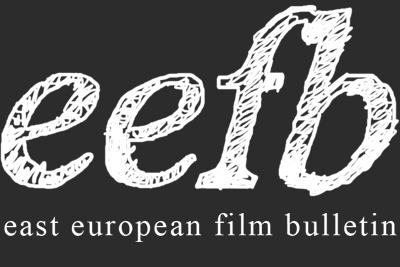
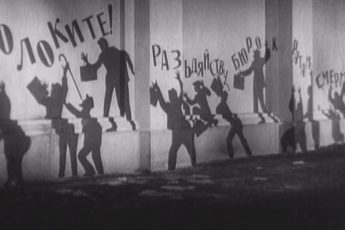
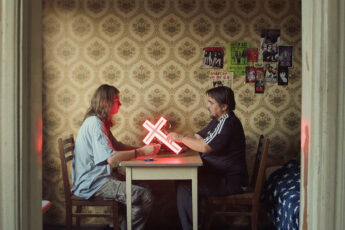
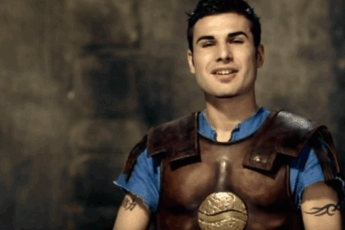
Leave a Comment